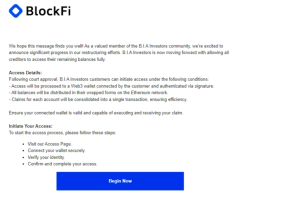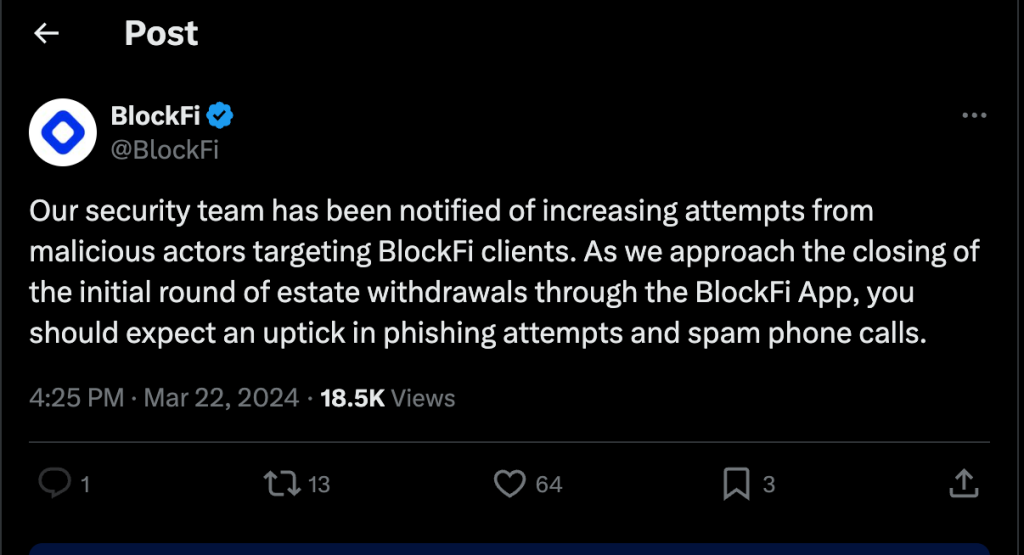In the past few hours, lots of BlockFi users have received emails from B.I.A Investors @everbridge.net directing them to click a ‘Begin Now’ button in order to initiate Blockfi withdrawal. Lots of people are wondering if the email is legit. Well, the short answer is NO. Read on for more details about this scam, and check out tips on how to stay protected.

BIA Investors Scam Email
The email which is sent from noreply@everbridge.net , has its subject as: ”Your asset claims are now available” and has a ‘BlockFi’ logo.
The content states ”following a court approval, B.I.A investors would be able to access remaining balance” . The guidelines for accessing the balance were listed as;
- Via a Web3 wallet connected by the customer and authenticated via signature.
However, the email has some red flags.
- The ‘Begin Now’ green button for initiating withdrawal contains a phishing link; bia-claims.com
- B.I.A. Investors is not affiliated with BlockFi.
- Bia-claims.com isn’t the official website for Blockfi
How The BIA Investors BlockFi Email Scam Works
This email scam falls into the category of ‘Phishing’ and ‘website spoofing’. The goal of this scam is to get recipients to click on the malicious link in the body of the email. Clicking on the link or ‘Initiate Withdrawal’ button directs users to a malicious website which is designed to steal funds off web3 wallets.
The scammers would try to get you to connect a wallet with funds in it ‘to withdraw’, but that is a switcharoo and they withdraw funds from your wallet.
BlockFi Response
BlockFi has addressed the scam and issued the following warning to customers via Twitter;

They further advise customers to be extremely vigilant of scam emails, text messages, or phone calls claiming to come from BlockFi.
“We recommend that you always go to our website directly and never click on a link in an email to log in,” they note.
What To Do About this Phishing
Do Not Click On The Link
Don’t attempt to click on the link no matter how legit it looks. Clicking links inside a scam email or text message would either direct you to a fraudulent website or install malware into your device.
Block The Sender’s Email
The final step you should take is blocking the email address that sent the email. You can do this by flagging the email address as spam.
Delete
Deleting the email will prevent you from mistakenly replying to it.
See latest alert – Bittrex Global Scam Email
